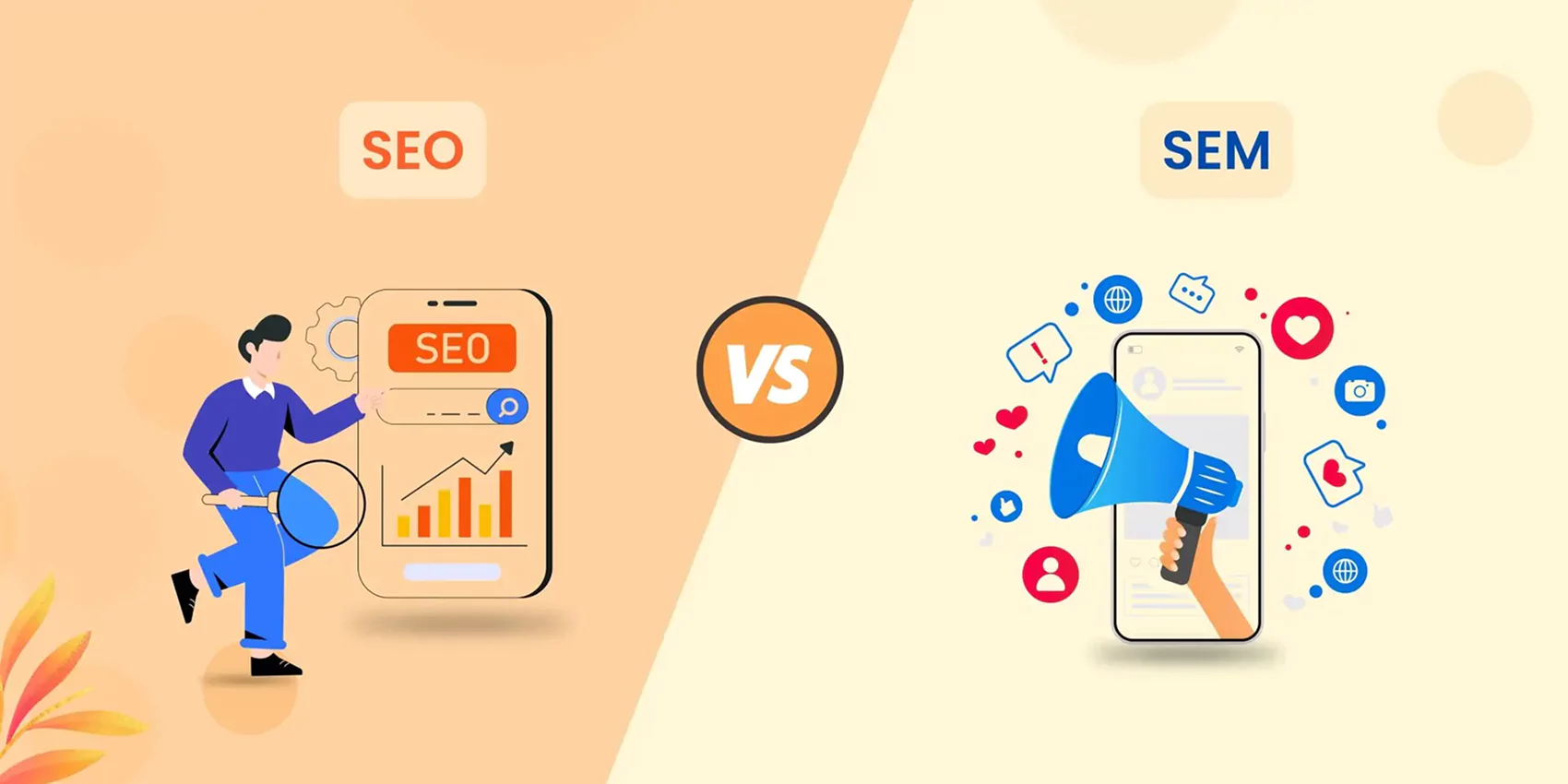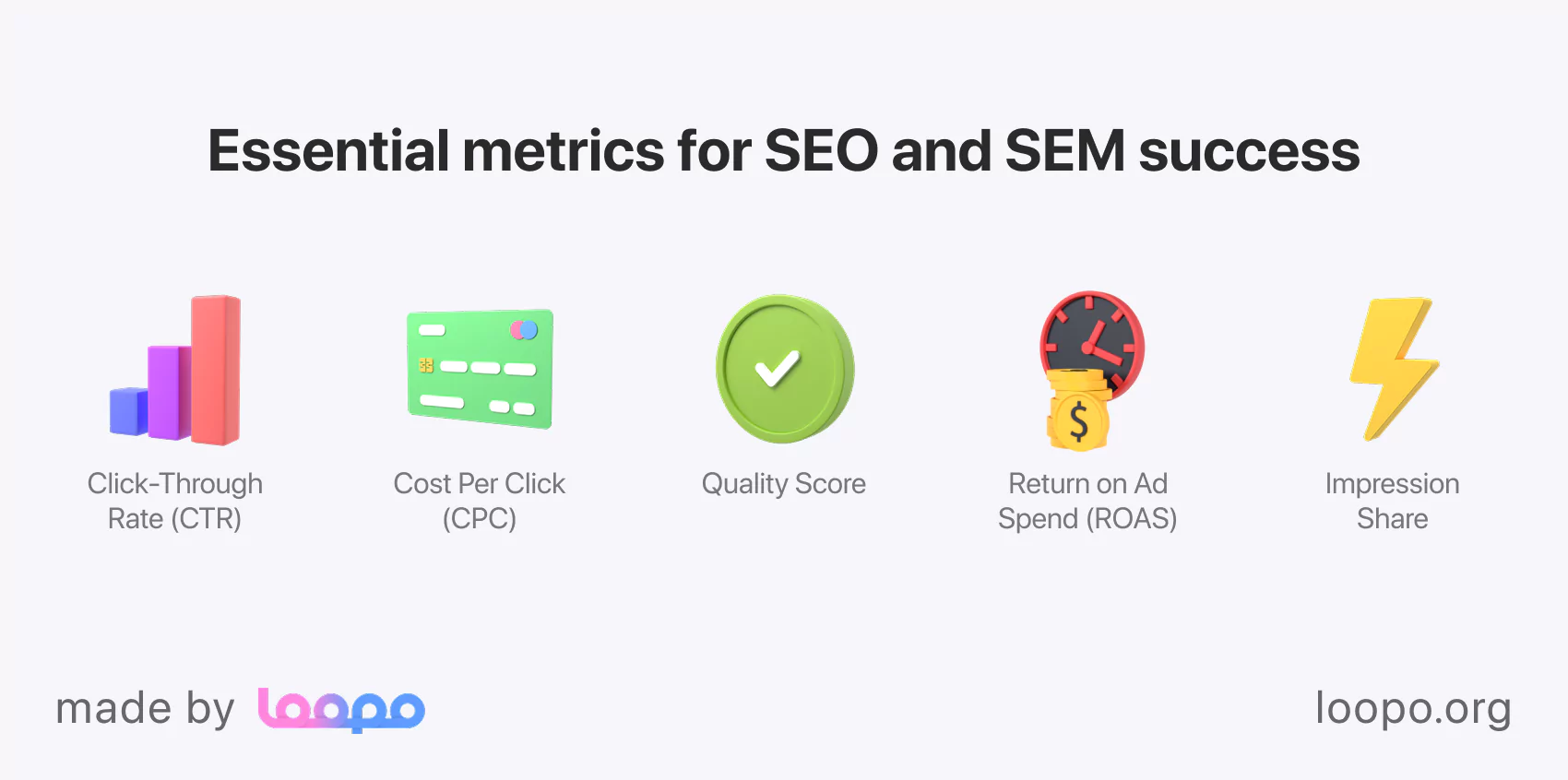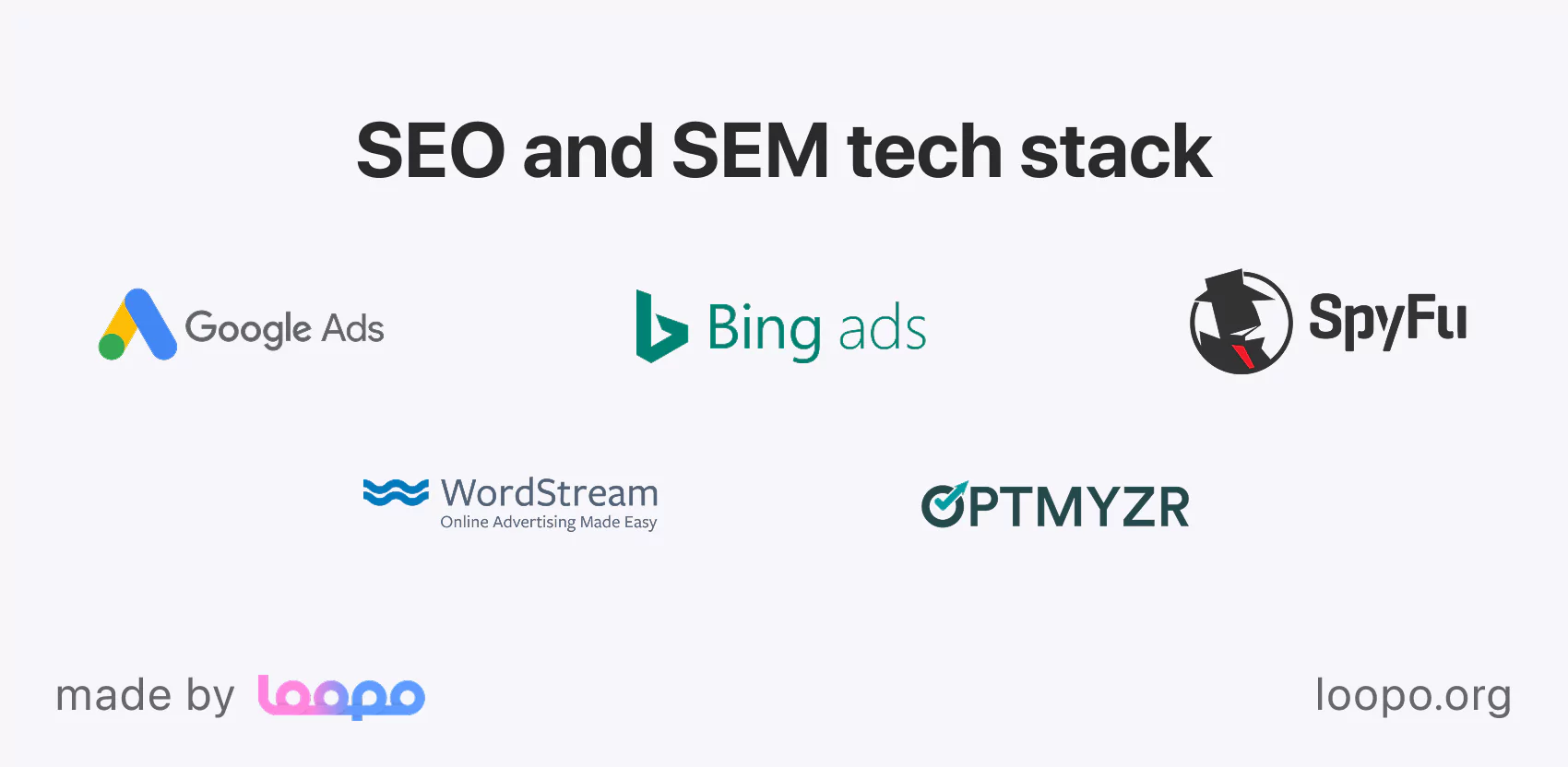SEO vs SEM: Understanding the Difference and Synergies

In the ever-evolving landscape of digital marketing, businesses are constantly seeking effective strategies to enhance their online presence and drive traffic to their websites. Two of the most prominent techniques in this realm are SEO and SEM. While they share the common goal of improving a website's visibility on search engines, they operate through distinct methodologies.
Understanding the difference between SEO vs. SEM is crucial for marketers aiming to create comprehensive and successful marketing campaigns.
What Is SEO?
Search Engine Optimization (SEO) is a foundational component of digital marketing that focuses on increasing a website's visibility organically. Unlike paid advertising, SEO relies on optimizing various elements of a website to rank higher in search engine results pages (SERPs).
Definition of SEO
SEO encompasses a range of strategies and techniques designed to improve a website's ranking on search engines like Google, Bing, and Yahoo. By enhancing both on-page and off-page factors, SEO aims to attract more organic (non-paid) traffic to a website.
Key Components of SEO
Keyword Research: Identifying the terms and phrases that potential customers use when searching for products or services related to your business.
On-Page Optimization: Enhancing individual web pages to rank higher and earn more relevant traffic. This includes optimizing content, meta tags, headers, and images.
Technical SEO: Ensuring that a website meets the technical requirements of modern search engines. This involves improving site speed, mobile-friendliness, and ensuring proper indexing.
Content Creation: Developing high-quality, relevant content that satisfies user intent and establishes authority in your niche.
Link Building: Acquiring backlinks from reputable websites to increase a site's authority and improve its ranking potential.
What Is SEM?
Search Engine Marketing (SEM) is a broader term that encompasses various strategies to increase a website's visibility on search engines, primarily through paid advertising. While SEO focuses on organic growth, SEM includes both organic and paid methods to drive traffic.
Definition of SEM
SEM involves promoting websites by increasing their visibility in search engine results pages through paid advertising. It includes activities such as pay-per-click (PPC) advertising, paid search listings, and other forms of paid marketing on search engines.
Key Components of SEM
Paid Search Advertising: Utilizing platforms like Google Ads to display ads on SERPs. Advertisers bid on keywords relevant to their target audience.
Ad Creation and Management: Developing compelling ads that attract clicks and managing them to ensure optimal performance.
Budget Management: Allocating and optimizing budget to maximize the return on investment (ROI) from paid campaigns.
SEM Monitoring: Continuously tracking the performance of SEM campaigns to make data-driven adjustments.
Analytics and Reporting: Analyzing campaign data to understand effectiveness and inform future strategies.
SEO and SEM: Complementary Strategies
While SEO and SEM operate differently, they are not mutually exclusive. In fact, they can complement each other to create a robust search engine marketing strategy. Combining both can maximize visibility, drive more traffic, and ultimately increase conversions.
Synergies Between SEO and SEM
Comprehensive Coverage: SEO ensures long-term visibility through organic rankings, while SEM provides immediate visibility through paid ads.
Data Sharing: Insights from SEM campaigns can inform SEO strategies, such as identifying high-performing keywords.
Enhanced Targeting: Using SEM’s precise targeting options can help refine SEO efforts by understanding audience behavior and preferences.
By leveraging the strengths of both SEO and SEM, businesses can create a balanced approach that capitalizes on the benefits of organic growth and paid advertising.
Comparing SEO and SEM: Key Differences
To effectively utilize SEO and SEM, it's essential to understand their fundamental differences. While both aim to enhance a website's visibility on search engines, their approaches and outcomes vary significantly.
Cost Structure
SEO: Primarily involves time and effort rather than direct financial expenditure. While you might invest in tools or hire professionals, the organic traffic generated is essentially free.
SEM: Involves a direct cost as it relies on paid advertising. Advertisers bid on keywords, and costs are incurred each time a user clicks on an ad (Pay-Per-Click or PPC).
Time to Results
SEO: Typically a long-term strategy. It can take several months to see significant improvements in rankings and organic traffic.
SEM: Delivers immediate results. Once a campaign is live, ads can start appearing in search results almost instantly, driving traffic right away.
Longevity of Impact
SEO: Offers sustained visibility. Once a website ranks well organically, it can maintain its position with ongoing optimization efforts.
SEM: Visibility is tied to the budget. When the ad spend stops, the ads disappear, and so does the traffic generated from them.
Click-Through Rates (CTR)
SEO: Generally enjoys higher CTRs as users tend to trust organic search results more than paid ads.
SEM: While ads can drive significant traffic, they often have lower CTRs compared to organic listings.
Trust and Credibility
SEO: Organic rankings are perceived as more credible by users, enhancing trust in your brand.
SEM: Users are aware that ads are paid placements, which can sometimes affect trust levels.
When to Use SEO vs. SEM
Deciding between SEO or SEM depends on your business goals, budget, and timeline. Here's a guide to help determine which strategy aligns best with your needs.
When to Prioritize SEO
Long-Term Growth: If you're aiming for sustained online presence and organic traffic growth.
Limited Budget: When you prefer to invest in strategies that don't require ongoing payments.
Building Authority: To establish your website as a trusted source in your industry.
When to Prioritize SEM
Immediate Results: If you need to generate traffic quickly, such as during a product launch or a time-sensitive promotion.
Competitive Markets: In highly competitive industries where organic rankings are hard to achieve rapidly.
Targeted Campaigns: When you want to target specific demographics or geographical locations with precision.
Combining SEO and SEM
For many businesses, the most effective approach is a combination of both SEO and SEM marketing strategies. This integrated approach allows you to benefit from the immediate traffic of SEM while building the long-term authority and organic presence through SEO.

Leveraging SEM Services for Enhanced Performance
SEM services encompass a range of solutions designed to optimize your paid search efforts. From campaign setup to ongoing management, these services ensure that your ads perform efficiently and effectively.
Types of SEM Services
Keyword Research and Selection
Identifying the most relevant and high-performing keywords for your campaigns.
Ad Creation and Testing
Developing compelling ad copy and creatives, and conducting A/B tests to determine what resonates best with your audience.
Bid Management
Strategically adjusting bids to maximize ROI while staying within budget constraints.
Landing Page Optimization
Designing and optimizing landing pages to improve conversion rates from your ads.
Performance Monitoring and Reporting
Continuously tracking campaign performance and providing detailed reports to inform future strategies.
Importance of SEM Monitoring
Effective SEM monitoring is crucial for the success of your campaigns. It involves:
Tracking Key Metrics: Such as click-through rates (CTR), conversion rates, cost-per-click (CPC), and return on ad spend (ROAS).
Analyzing Performance Data: Understanding which keywords and ads are performing well and which need adjustments.
Making Data-Driven Decisions: Using insights from monitoring to optimize campaigns for better results.
Search Engine Marketing Intelligence
Search engine marketing intelligence involves using data and analytics to gain insights into your SEM campaigns. This intelligence helps in:
Identifying Trends: Understanding how user behavior and search trends are evolving.
Competitive Analysis: Assessing what competitors are doing and identifying opportunities to outperform them.
Optimizing Strategies: Refining your SEM strategies based on data-driven insights to enhance effectiveness.
Integrating SEO and SEM for Maximum Impact
Combining SEO and SEM can lead to a more comprehensive and effective search engine marketing strategy. Here's how you can integrate both to maximize your online presence and drive better results.
Unified Keyword Strategy
By aligning your SEO and SEM keyword strategies, you can ensure consistency and reinforce your visibility across both organic and paid search results. This unified approach helps in:
Maximizing Keyword Coverage: Ensuring that you are targeting a broad range of relevant keywords.
Reinforcing Messaging: Providing a consistent message to users regardless of whether they click on an organic result or a paid ad.
Shared Insights and Data
Utilizing insights from both SEO and SEM can enhance your overall marketing strategy. For instance:
SEO Insights Inform SEM: High-performing organic keywords can be leveraged in your SEM campaigns for better targeting.
SEM Data Enhances SEO: Performance data from SEM can identify which keywords convert best, informing your SEOcontent strategy.
Coordinated Content Strategy
Creating content that serves both SEO and SEM goals ensures that your website provides valuable information to users while also supporting your paid campaigns. This includes:
Optimized Landing Pages: Designing landing pages that are optimized for both organic search and paid ads.
Consistent Messaging: Ensuring that the content aligns with the ad copy used in your SEM campaigns.
Measuring the Success of SEO and SEM Campaigns
To ensure that your SEO and SEM efforts are yielding the desired results, it's essential to implement effective measurement and analysis strategies. By tracking the right metrics, you can gain valuable insights into your campaigns' performance and make informed decisions to optimize your strategies further.
Key Metrics for SEO
Organic Traffic: The number of visitors coming to your website through unpaid search results. This metric indicates how well your SEO efforts are driving traffic.
Keyword Rankings: Monitoring the positions of your target keywords in search engine results pages (SERPs) helps assess the effectiveness of your optimization strategies.
Bounce Rate: The percentage of visitors who leave your site after viewing only one page. A high bounce rate may suggest that your content isn't meeting user expectations.
Backlinks: The number and quality of external websites linking to your site. Backlinks are a significant factor in search engine rankings.
Conversion Rate: The percentage of visitors who complete a desired action, such as making a purchase or filling out a contact form. This metric measures the effectiveness of your SEO in driving valuable traffic.
Key Metrics for SEM
Click-Through Rate (CTR): The ratio of users who click on your ad to the number of total users who view it. A higher CTR indicates that your ads are relevant and compelling.
Cost Per Click (CPC): The amount you pay each time a user clicks on your ad. Managing CPC is crucial for maintaining a profitable SEM campaign.
Quality Score: A metric used by platforms like Google Ads to measure the relevance and quality of your ads and landing pages. A higher Quality Score can lead to lower costs and better ad placements.
Return on Ad Spend (ROAS): The revenue generated for every dollar spent on advertising. ROAS helps evaluate the profitability of your SEM campaigns.
Impression Share: The percentage of total possible impressions your ads receive compared to the total available impressions. This metric helps identify opportunities to increase visibility.

Tools for SEO and SEM
Leveraging the right tools is essential for managing and optimizing your SEO and SEM campaigns effectively. Here are some of the top tools that can enhance your marketing efforts:
SEO Tools
Google Analytics: Provides in-depth insights into website traffic, user behavior, and conversion tracking.
SEMrush: An all-in-one marketing toolkit for SEO, offering features like keyword research, site audits, and competitor analysis.
Ahrefs: Renowned for its robust backlink analysis and comprehensive SEO auditing capabilities.
Moz Pro: Offers a suite of SEO tools, including keyword explorer, link research, and rank tracking.
Yoast SEO: A popular WordPress plugin that helps optimize on-page SEO elements like meta tags and content readability.
SEM Tools
Google Ads: The leading platform for creating and managing PPC campaigns, offering extensive targeting and bidding options.
Bing Ads: An alternative PPC platform that allows you to reach a different segment of search engine users.
SpyFu: Enables you to analyze competitors' SEM strategies, including their top keywords and ad copy.
WordStream: Provides tools for managing and optimizing PPC campaigns across multiple platforms.
Optmyzr: Offers advanced automation and optimization features to enhance the performance of your SEM campaigns.

Best Practices for Integrating SEO and SEM
Successfully combining SEO and SEM requires a strategic approach that leverages the strengths of both disciplines. Here are some best practices to ensure seamless integration:
Aligning Goals and Objectives
Unified Objectives: Ensure that both your SEO and SEM teams are working towards common business goals, such as increasing website traffic, generating leads, or boosting sales.
Consistent Messaging: Maintain consistent branding and messaging across both organic and paid channels to reinforce your brand identity.
Coordinated Keyword Strategy
Comprehensive Keyword Research: Conduct thorough keyword research to identify high-value keywords that can be targeted through both SEO and SEM.
Keyword Prioritization: Prioritize keywords based on their potential impact and allocate resources accordingly between organic and paid efforts.
Shared Content Strategy
Content Development: Create high-quality content that addresses user intent and can be leveraged for both SEO and SEM campaigns.
Repurposing Content: Use content created for SEO purposes in your SEM campaigns, such as promoting blog posts or landing pages through paid ads.
Cross-Channel Data Sharing
Performance Insights: Share data and insights between your SEO and SEM teams to identify trends and optimize strategies collaboratively.
A/B Testing: Conduct A/B tests on ad copy and landing pages to determine what resonates best with your audience and apply those findings to your SEO efforts.
Continuous Optimization
Regular Audits: Perform regular audits of both SEO and SEM campaigns to identify areas for improvement and implement necessary adjustments.
Stay Updated: Keep abreast of the latest trends and algorithm updates in both SEO and SEM to ensure your strategies remain effective.
Overcoming Common Challenges in SEO and SEM Integration
Integrating SEO and SEM can present several challenges. Here are some common obstacles and strategies to overcome them:
Budget Allocation
Balanced Investment: Allocate your budget in a way that supports both short-term gains through SEM and long-term growth through SEO.
Flexible Budgeting: Be prepared to adjust your budget based on campaign performance and changing business priorities.
Coordination Between Teams
Clear Communication: Establish regular communication channels between your SEO and SEM teams to ensure alignment and collaboration.
Shared Tools and Platforms: Utilize shared tools and platforms for better visibility and coordination between teams.
Measuring Combined Impact
Integrated Analytics: Use integrated analytics tools to track the combined impact of SEO and SEM efforts on your overall marketing goals.
Holistic Reporting: Develop comprehensive reports that provide a unified view of your SEO and SEM performance metrics.
Future Trends in SEO and SEM
Staying ahead of the curve is crucial for maintaining a competitive edge in SEO and SEM. Here are some emerging trends to watch:
Voice Search Optimization
Growing Popularity: With the rise of smart speakers and voice assistants, optimizing for voice search is becoming increasingly important.
Conversational Keywords: Focus on long-tail and conversational keywords that align with how people speak when using voice search.
Artificial Intelligence and Machine Learning
AI-Powered Tools: Leverage AI and machine learning tools to enhance keyword research, content creation, and campaign optimization.
Personalization: Use AI to deliver personalized ad experiences and tailored content to your audience.
Mobile-First Indexing
Mobile Optimization: Ensure that your website is fully optimized for mobile devices, as search engines prioritize mobile-friendly sites in their rankings.
Responsive Design: Implement responsive design to provide a seamless user experience across all device types.
Video Marketing Integration
Video Content: Incorporate video content into your SEO and SEM strategies to engage users and improve search rankings.
Video Ads: Utilize video ads in your SEM campaigns to capture audience attention and drive higher engagement rates.
Enhanced User Experience (UX)
Core Web Vitals: Focus on improving your website's Core Web Vitals, which are key metrics related to user experience and page performance.
Interactive Elements: Incorporate interactive elements like quizzes, polls, and interactive infographics to enhance user engagement.
Conclusion
Understanding the differences and synergies between SEO and SEM is vital for crafting effective digital marketing strategies. While SEO focuses on organic growth and long-term visibility, SEM provides immediate results through paid advertising. By integrating both approaches, businesses can maximize their online presence, drive more targeted traffic, and achieve higher conversion rates.
Leveraging the right tools, tracking key metrics, and staying updated with industry trends will ensure that your SEO and SEM campaigns are both complementary and highly effective.
Explore our blog for valuable insights and reach out for customized solutions designed to meet your specific needs and goals.




